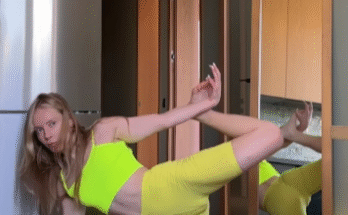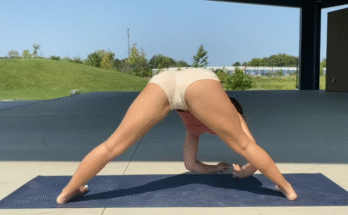
Tight hip flexors are a common issue for many people, especially those who spend long hours sitting at a desk, driving, or engaging in repetitive movements. Over time, this tightness can lead to discomfort, reduced mobility, and even lower back pain. One effective way to release tension in the hip flexors is through somatic exercises, which focus on retraining the nervous system to allow for greater relaxation and mobility.
In this guide, we’ll explore the importance of somatic hip flexor release exercises, how they work, and a step-by-step method to help you unlock and release tension in your hips for better movement and pain relief.

Understanding the Hip Flexors
The hip flexors are a group of muscles responsible for lifting the legs and bending the torso forward. The primary muscles in this group include:
- Psoas Major: Connects the lower spine to the femur and is crucial for hip flexion.
- Iliacus: Works with the psoas to stabilize the pelvis and assist with movement.
- Rectus Femoris: Part of the quadriceps, helping with both hip flexion and knee extension.
- Sartorius: The longest muscle in the body, aiding in hip and knee movement.
When these muscles become tight, they can contribute to poor posture, lower back pain, and limited range of motion. Somatic exercises help address this by engaging the mind-body connection to release chronic tension patterns.

What Is Somatic Movement?
Somatic movement is a form of neuromuscular education that focuses on reprogramming the nervous system to release muscular tension and restore natural movement patterns. Unlike traditional stretching, which forces a muscle to lengthen, somatic exercises use slow, controlled movements to retrain the brain and nervous system, allowing muscles to relax without resistance.
This process is often called pandiculation, a technique that involves contracting, slowly releasing, and completely relaxing a muscle. By doing this, the brain “resets” muscle tone and improves overall function.

Benefits of Somatic Hip Flexor Release
Practicing somatic hip flexor release exercises can provide several benefits, including:
- Improved mobility and flexibility: Freer movement in the hips and lower back.
- Pain relief: Reduction of lower back, hip, and knee discomfort.
- Better posture: Reduced forward pelvic tilt caused by tight hip flexors.
- Increased body awareness: Enhanced ability to recognize and correct movement patterns.
- Relaxation and stress relief: Reduced tension from prolonged sitting or repetitive activities.
Somatic Hip Flexor Release Exercise: Step-by-Step Guide
Preparation
Before beginning the exercise, find a quiet space where you can lie down comfortably on a mat or soft surface. Wear loose, comfortable clothing to allow full range of motion.
Step 1: Body Awareness and Breathing
- Lie down on your back with your legs extended and arms resting by your sides.
- Close your eyes and take a few deep breaths, focusing on how your lower back and hips feel.
- Notice any areas of tension or tightness, especially around your hip flexors.
Step 2: Engaging the Hip Flexors
- Bend your right knee and place your foot flat on the ground while keeping the left leg extended.
- Slowly lift your right foot off the ground, bringing your knee toward your chest.
- Engage your hip flexors as you lift, but do so gently—do not force the movement.
Step 3: Controlled Release (Pandiculation)
- Hold the lifted position for a few seconds, feeling the tension in your hip flexor.
- Slowly begin to lower your foot back down, but do this in slow motion, resisting the movement slightly.
- As your foot returns to the floor, completely relax the muscle and notice the difference in tension.
Step 4: Repeating on Both Sides
- Repeat the movement 5-7 times on the right side, each time focusing on a slow, controlled release.
- Switch to the left side and perform the same sequence.
Step 5: Integration and Relaxation
- Once you have completed both sides, extend both legs and rest for a minute.
- Take deep breaths and observe any changes in how your hips and lower back feel.
- Notice if your hips feel more balanced or relaxed compared to when you started.
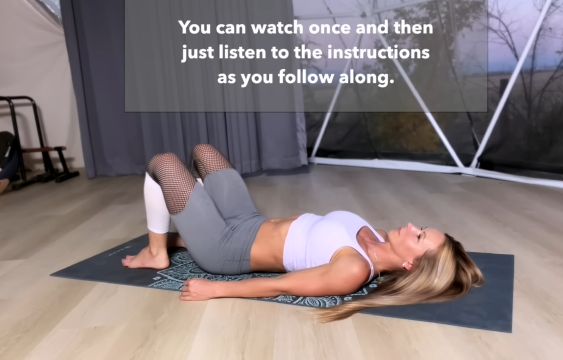
Additional Tips for Effective Somatic Release
- Move slowly: The key to somatic exercises is slow, mindful movement. Avoid rushing through the motions.
- Focus on relaxation: Rather than forcing a stretch, aim to let go of tension gradually.
- Breathe deeply: Proper breathing helps activate the parasympathetic nervous system, promoting relaxation.
- Perform daily: Consistency is key to reprogramming habitual muscle tension.
- Listen to your body: If you feel any discomfort, modify the movement or take breaks as needed.
Common Mistakes to Avoid
- Moving too fast: Rapid movements don’t allow the brain to fully register the release process.
- Forcing the stretch: This can lead to more tension instead of relaxation.
- Holding tension: Be mindful of any gripping or tensing in other parts of the body.
- Ignoring breath: Shallow breathing can increase stress; always maintain steady, deep breaths.
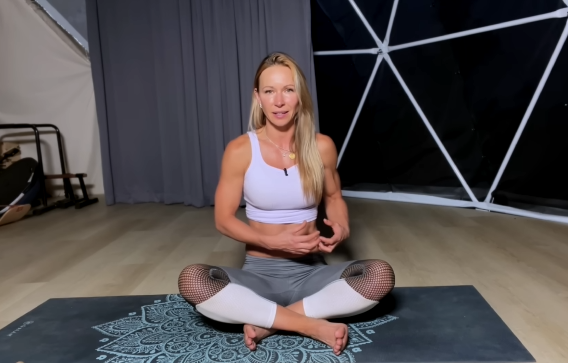
Complementary Somatic Exercises
To further improve hip mobility and release tension, consider adding these exercises:
- Pelvic Tilts: Lie on your back and gently rock your pelvis back and forth to release lower back tension.
- Somatic Cat-Cow: Perform slow, controlled spinal flexion and extension to enhance core and hip mobility.
- Side-Lying Hip Release: Lie on your side and gently lift and lower the top leg to encourage relaxation in the hip muscles.
When to Use This Exercise
The somatic hip flexor release exercise can be beneficial:
- In the morning: To counteract overnight muscle stiffness.
- Before or after workouts: To improve mobility and prevent post-exercise tightness.
- During breaks: If you sit for long periods, taking a few minutes to release your hip flexors can prevent stiffness.
- Before bedtime: To relax the body and reduce tension before sleep.
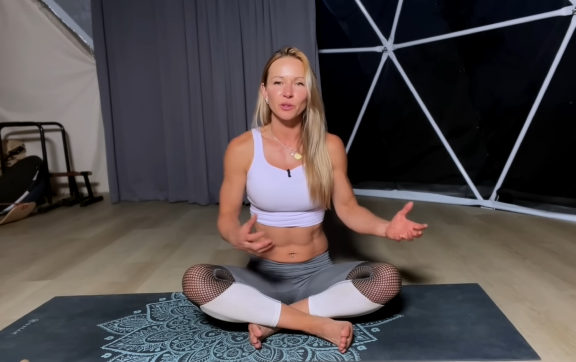
Final Thoughts
Releasing tight hip flexors is not just about stretching—it’s about retraining your brain and nervous system to let go of chronic tension. By incorporating somatic exercises into your routine, you can experience greater mobility, reduced pain, and improved posture over time.
The key to success with somatic movement is patience and consistency. The more you practice, the better your body will respond. So take your time, listen to your body, and enjoy the feeling of freedom in your hips!
